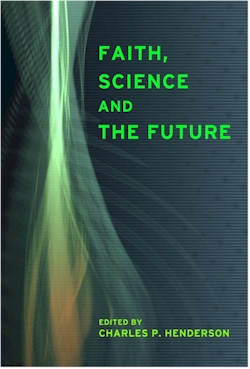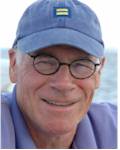Bible | Movies | Books | People | Hot Topics | Holidays | Humor | Gallery | Sanctuary | Sermons | Prayer | Quizzes | Communities | God | FAQ | Links
|
Sponsored Link |

I am pleased to announce a new book on the sometimes contentious relationship between science and religion. Though the contributors to this volume represent fields as diverse as evolutionary biology and theology, together they confirm the view that people of faith have little to fear from science; in fact, constructive engagement with the sciences is essential to the vitality of religion as well as the health of democratic society itself. There are at least four major ways in which the writers represented here construe the relationship between science and religion. First, one can accept the authority of both science and religion, separating them into two separate domains, “non-overlapping magisteria,” as the late Stephen Jay Gould famously proposed. In this maneuver, potential conflicts as well as the possibility any deep convergences are sidestepped. Second, one can acknowledge that there are irreconcilable differences between the methods, theories, and conclusions of scientists and theologians, but when conflict appears, the authority of either science or religion is favored. Finally, one can attempt a synthesis between science and religion in which the insights and findings of one correct, expand, or deepen the insights of the other. Contributors to this book represent all four of these approaches and, with an eye to highlighting the diversity of voices involved in this conversation, I do not privilege any one of these paradigms over the others. Robert Pollack, who directs Columbia University’s Center for the Study of Science and Religion has the first and last word in this volume. Bob is a trusted colleague and one of the key participants in the currents of thought at the interface of science and religion today. Several of the articles contained here were delivered as part of CSSR’s regular lecture series. The articles by Philip Kitcher and Neil Gillman are illustrative of the quality of thought that emanates from CSSR. Kitcher, a philosopher of science, will stir strong reactions from many readers as he comes closest to suggesting that science is to be privileged over and against theology. Few will have a problem with his declaration that Intelligent Design theory is not only incompatible with science, but intellectually bankrupt. But in Kitcher’s view the conflict between an Enlightenment based science and religion runs deeper than our contemporary culture wars suggest. Evolution functions as a stand-in for the wider conflict between reason and revelation, and in Kitcher’s view, belief in a supernatural God is contrary to reason itself. Still, he concludes his article on a positive note, envisioning a new partnership between what he calls “spiritual religion” and secular humanism. In fact, Kitcher suggest such an alliance between religion and science is essential for the preservation of a free and democratic society. Neil Gillman, also a philosopher, as well as being, arguably, the preeminent theologian of Conservative Judaism, draws an analogy between science and religion:
Even so, Gillman comes closest to the view that science and religion exist in entirely separate domains. They are, he suggests, “two equally valuable master stories dealing with equally significant realities that, for the most part, do not intersect.” While Kitcher sees traditional religion as being upended by science, Gillman argues that a scientific world view leaves humanity bereft of any real hope. And Gillman finds in the eschatological hope of biblical religion a remedy for the hopelessness that appears to be the inevitable consequence of a purely secular view of the world. If Kitcher and Gillman offer sharply contrasting notions of the relationship between science and religion, William Carl and Nancy Fuchs Kreimer share a similar view. Both are leaders in the field of theological education, and both believe that it is essential for a new generation of religious leaders to be well versed in the sciences, in addition to the subject matter that prevails in seminaries and rabbinical schools. Carl happens to be the President of Pittsburgh Theological Seminary while Kreimer is Director of the Religious Studies Program at Reconstructionist Rabbinical College. They share a deep interest in the neurosciences and find significant areas of convergence between science and theology, suggesting that current research into human consciousness, not only illuminates the nature of religious experience, but offers rich new opportunities for the theological enterprise itself. Several of the articles in this issue result from the research undertaken by fellows at the CrossCurrents Research Colloquium which I direct each summer. I am grateful to the John Templeton Foundation for a grant that permitted CrossCurrents to offer ten fellowships to scholars whose research explored the connections between science and religion. The articles by Charlene Burns and Suchismita Sen are products of this Templeton funded effort. Sen teaches in the Religious Studies Department at Pennsylvania State University and focuses on the difficulties of defining both “religion” and “religious studies,” especially in the context of a large, secular university. She observes that a comprehensive view of religion makes the study of it necessarily interdisciplinary. She argues that the points of convergence between religious studies and the sciences are critical, and further suggests that the study of religion plays a potentially powerful role in the lives of students. Sen’s article might be considered as a reply to Philip Kitcher’s call for an alliance between spiritual religion and secular humanism. One implication of Sen’s analysis is that a religious studies program at a large public university is one of the settings where such a partnership might be forged, with important benefits for democratic society itself. Charlene Burns also teaches at a large, public university, but she writes here as a theologian. Her article goes further than any of the others in this collection in the direction of finding a convergence of science and theology. Specifically, Burns sees the central affirmations of a distinctly Christian theology as being transformed in the encounter with science, even as theology provides a frame in which the discoveries of science can be fully understood. Finally, we hear from John Polkinghorne, one of the foremost advocates of a renewed conversation between science and theology. With a distinguished career that spans both fields, Polkinghorne integrates the insights of the sciences with the wisdom of his own, deeply felt convictions. And he writes with a clarity that makes his thought all the more compelling. Ironically, and for all their differences, the articles in this issue of CrossCurrents , confirm Albert Einstein’s aphorism: “Science without religion is lame, religion without science is blind.” In addition to thanking Robert Pollack and CSSR for their help in putting this issue together, I’d like to thank Professors Deborah and Solomon Mowshowitz who served as science advisors at the colloquium, and Laura Bothwell, Program Director at CSSR for her helpful collaboration. Laura’s article makes a good starting point for the conversation. She traces the sometimes troubled history of the relationship between science and religion, suggesting, like the other voices in this volume, that people of faith have little to fear from science; in fact, constructive engagement with the sciences is essential to the vitality of religion as well as the health of democratic society itself. —Charles P. Henderson
Please take a moment to let us know you
were here!
If you want to talk with someone in person, please feel free to call 917-439-2305
The Rev. Charles P. Henderson is a Presbyterian minister and is the author of God and Science (John Knox Press, 1986). Charles also tracks the boundry between the virtual and the real at his blog: Next World Design, focusing on the mediation of art, science and spirituality in the metaverse. For more information about Charles Henderson. |
Sponsored Link
|
|||||

